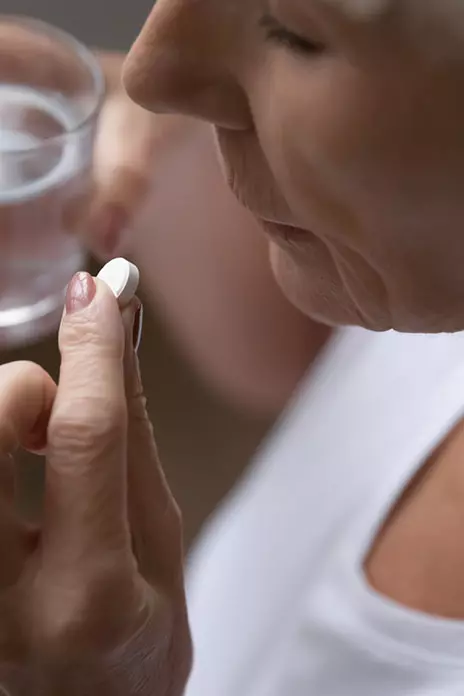Stevens-Johnson syndrome (SJS) is a hypersensitivity type IV skin reaction caused by adverse reactions to certain drugs. The condition is characterized by cutaneous lesions on the skin and mucosal membranes, but it can also initially present flu-like symptoms such as sore throat, fever, and fatigue. SJS is a medical emergency that may require treatment in an intensive care unit or burn center.
Understanding what is Stevens Johnson syndrome, including symptoms, causes, treatments, and prevention, can help you take life-saving action should the condition arise. If you suspect an adverse reaction to a medication, seek emergency attention and contact a Stevens-Johnson syndrome specialist doctor as soon as possible.
Drug manufacturers and medical professionals have a duty to ensure that physicians are aware of the risks posed by Stevens-Johnson syndrome. If they failed in this duty of care and you suffered injuries due to an adverse reaction, you could pursue compensation through a pharmaceutical product liability lawsuit.
What Causes Stevens-Johnson Syndrome?
To fully answer the question “What is Stevens Johnson syndrome?”, we must also understand what it is caused by. Identifying the culprit drug is not always easy, as patients may be on multiple medications or unaware of the potential for life-threatening complications. SJS specialists may use the algorithm of drug causality for epidermal necrolysis (ALDEN) method to determine the probability that a specific drug caused SJS.
The following are a few of the most common drugs that can lead to Stevens-Johnson syndrome:
- Modafinil
- Antibiotics
- Anticonvulsants
- Sulfa drugs
- Acetaminophen
- Allopurinol
- Nevirapine
- Nonsteroidal anti-inflammatory drugs (NSAIDs), such as ibuprofen
Stevens-Johnson syndrome will likely reoccur if you take a drug that previously caused an adverse reaction. It is therefore critical that medical professionals thoroughly review a patient’s medical history before prescribing or administering medication.
Genetic Factors for Stevens-Johnson Syndrome
Recent studies indicate that Stevens-Johnson syndrome may also have a genetic component. SJS has been connected to the human leucocyte antigen (HLA) genotype, specifically for individuals of Asian or South Asian descent.
Symptoms of SJS To Look Out For
Early onset symptoms of Stevens-Johnson syndrome are often flu-like. Watch for the following symptoms of SJS after starting a new medication:
- Fever
- Body aches
- Sore mouth and throat
- Burning eyes
- Cough, wheezing, or trouble breathing
- Blisters and sores on lips, mouth, throat
- Rash on the upper body, face, arms, and legs
- Blisters and ulceration
Stevens-Johnson syndrome typically affects the skin and mucosal membranes. As the condition progresses, blisters can ulcerate, causing skin shedding on large parts of the body's surface area. Mucosal involvement can include the nose, mouth, throat, and eyes. Stevens-Johnson eye symptoms can create significant long-term disability, as ocular involvement may lead to scarring and vision loss.
Stevens-Johnson Syndrome Treatment Guidelines
Prompt medical treatment is crucial for Stevens-Johnson syndrome treatment. If you suspect SJS, you may require inpatient care in an intensive care unit. Treatment may include:
- IV fluids
- Steroids and anti-inflammatory medications
- Ointments, compresses, and creams
- Surgical skin grafts
- Wound treatment and dressing to prevent infection
- Ocular care to reduce eye damage
Possible SJS Complications and Risk Factors
Stevens-Johnson syndrome causes the outer layer of the affected skin to slough off, leaving the patient open to potential bacterial infections and other complications, including:
- Dehydration
- Sepsis
- Shock
- Organ damage and failure
- Pneumonia
- Eye damage
- Scarring and disfigurement
SJS vs. TEN vs. Dress
Stevens-Johnson syndrome can progress to affect more than 10% of the body surface. When the condition affects more than 30% of the patient’s body surface, it is called toxic epidermal necrolysis (TEN). There is considerable overlap between the two conditions when the syndrome affects 10-30% of the patient’s body surface.
Symptoms of SJS and TEN may also overlap with drug rash with eosinophilia and systemic symptoms (DRESS), another severe drug reaction. The primary difference between the two conditions is that DRESS tends to affect internal organs, while SJS predominantly affects the skin and mucous membranes.
Diagnosis and Treatment
Diagnosis, treatment, and prognosis factors differ for Stevens-Johnson syndrome vs. DRESS, so working with a specialist in Stevens-Johnson syndrome histology is critical. Specialists should be able to recognize the difference between the conditions through Stevens-Johnson syndrome images, but they may require a skin biopsy to confirm.
In severe cases of TEN, a medical professional will also recognize the Stevens-Johnson syndrome Nikolsky sign, in which large sections of the upper skin layers slide off the body when pressure is applied.
Secure Legal Representation if You Developed SJS
After answering the question “What is Stevens Johnson syndrome?”, many are left wondering what their next steps should be in terms of recovery and compensation. With the help of an experienced legal counsel, you could pursue damages through pharmaceutical litigation if you suffered from SJS due to medical malpractice or a pharmaceutical defect.
If your SJS diagnosis resulted from inadequate warning or other drug defects, you could pursue an SJS lawsuit against the pharmaceutical manufacturer.
The knowledgeable pharmaceutical attorneys at Dunn Sheehan can help you understand your legal options, so go beyond the basics of answering “What is Stevens Johnson syndrome?” and achieve the resolution you deserve. Contact our SJS lawyers today to schedule a free consultation.

